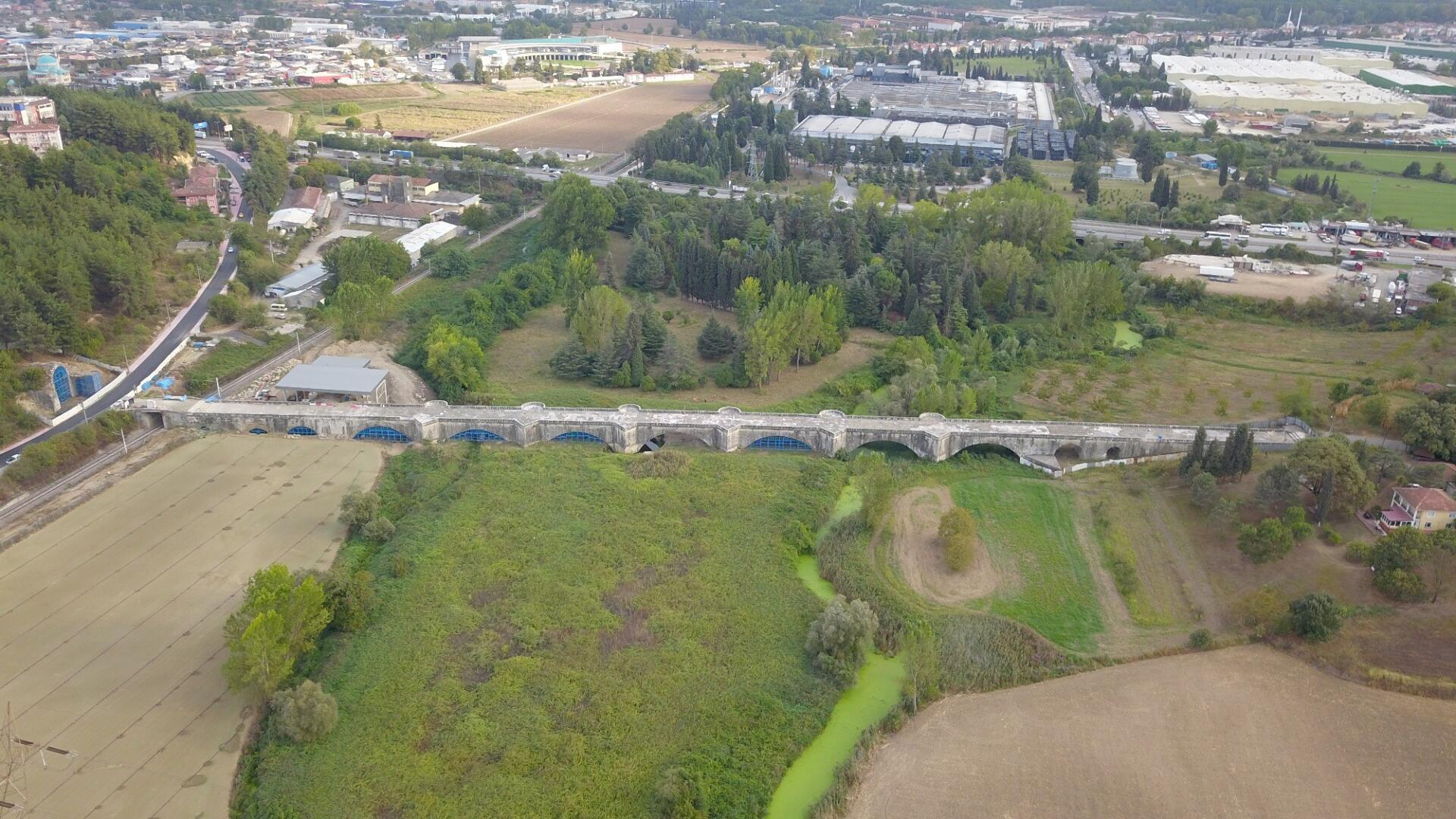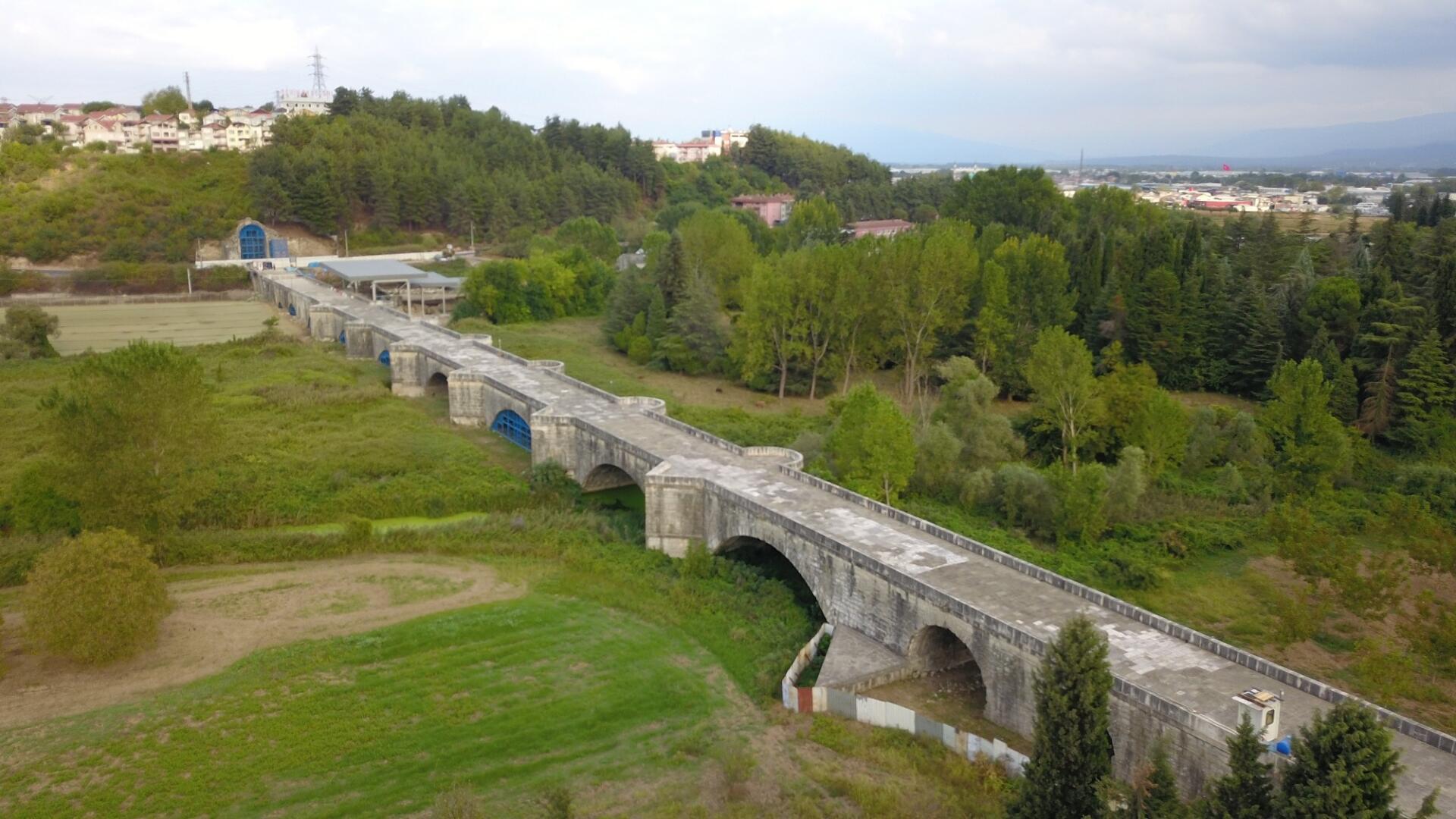What if we told you that in Sakarya, a 1,500-year-old Roman giant, as old as Istanbul's pearl, Hagia Sophia, is quietly waiting for you? Right on the edge of the city, hidden among the greenery of Serdivan, this magnificent structure is eager to take you on a journey back in time. If you're looking for a different kind of adventure this weekend and want to fill your list of things to do in Beş Köprü, put exploring the dusty pages of history at this monumental structure at the very top. Let's uncover the secrets of this time-defying giant together.
Walk across the 1,500-year-old Roman bridge
Close your eyes for a moment and imagine... Those massive limestone blocks under your feet have been right here, in the same spot, for a full 1,500 years. You are now walking on the same path trodden by the boots of Roman legionaries, silk-laden caravans, wise dervishes, and curious travelers. This bridge isn't just a stone structure; it's a living, breathing time capsule. It has witnessed countless earthquakes, seen empires rise and fall, yet it still stands tall.
You might not be able to walk directly over it right now due to ongoing restoration work, but even standing next to this massive structure and feeling its grandeur is an experience in itself. Remember, this work is being done to give it another 1,500 years of life. The care shown to this silent giant is the greatest proof of what a priceless treasure it is.

Marvel at the architecture of this massive structure over the Sakarya River
365 meters... Imagine laying almost four football fields end to end. That's how long this structure is, built on 12 massive arches. But was this colossal bridge built for the tiny Çark Creek that flows gently beneath it today? Of course not! And this is where the bridge's greatest mystery begins.
The bridge was actually built for the mighty Sakarya River, which once roared through here. However, over the centuries, the river shifted its course about 3 km to the east, leaving the bridge high and dry. Some historians even claim that Emperor Justinian planned an alternative canal project to the Bosphorus and that the bridge was part of this mega-project. The Triumphal Arch that once stood at the western end (now gone) and the mysterious Apse (thought to be a religious altar) still standing at the eastern end only deepen this mystery. Of course, this isn't the only marvel of Roman engineering in Anatolia. We recommend you also check out our article on another structure that defies time just like the Justinian Bridge, the Aspendos Bridge in Antalya.

Learn about the bridge's history and strategic importance
Behind every great structure lies a great dream. Emperor Justinian's dream was to restore the former glory of the Roman Empire. This bridge was built as the most critical crossing point on the strategic military road connecting the capital, Constantinople (modern-day Istanbul), to the eastern provinces and the border of its greatest rival at the time, the Sasanian Empire. So, this bridge wasn't just built to cross a river; it was built to carry the dreams of an empire.
So why do we call this 12-arched bridge 'Beşköprü,' which means 'Five Bridges'? It all started with a simple misunderstanding. The Romans just called it 'Pons,' meaning 'Bridge.' Centuries later, the local Hellenized population mistook 'Pons' for a proper name and started calling it 'Pontogephyra,' meaning 'Bridge of Pons.' Over time, this name evolved in common speech to 'Pentegephyra,' and eventually 'Beşköprü'. The value of this unique structure was officially recognized in 2018 when it was added to the UNESCO World Heritage Tentative List. This means it's not just our heritage, but a shared heritage of all humanity. The Justinian Bridge is just one piece of Sakarya's rich history. To discover other historical and natural beauties in the city, you can also check out our articles on other historic crossings like the Double Bridge in Artvin.

While You're Here...
How about a journey from the depths of history to the heart of nature? We have two great suggestions to extend your Justinian Bridge visit into a full-day trip:
Acarlar Floodplain Forest (Longoz): For a unique experience where you'll feel like you're in the Amazon, gliding on a boat among water lilies and water violets, head to the Acarlar Floodplain. It's Turkey's largest single floodplain forest and a true natural wonder.
Poyrazlar Lake: If you'd prefer a more relaxed day, perhaps with a barbecue while listening to the birds, Poyrazlar Lake, just a stone's throw from the city center, is waiting for you. A short walk by the lake will wash away the fatigue of the whole week.
Frequently Asked Questions (FAQ)
1. Where is the Justinian Bridge (Beşköprü) and how do I get there? The bridge is located in the Beşköprü area of Sakarya's Serdivan district. It's about 8-10 km from the city center. You can easily reach it by private car or public transportation.
2. Is there an entrance fee for the Justinian Bridge? Are there visiting hours? No, visiting this historical marvel is completely free. Since it's an open area, there are no specific visiting hours; you can see it at any time of day.
3. If the bridge has 12 arches, why is it called Beşköprü (Five Bridges)? This is one of the most frequently asked questions! The name doesn't come from the number of arches but from a linguistic evolution. The Latin word for bridge, Pons, was misunderstood over time and evolved into Pentegephyra (Five Bridges) in the local dialect. So, it's purely the result of historical and linguistic change.
Bibliography For more academic information on the universal importance of the Justinian Bridge and to view its official record at UNESCO, you can consult the following source: The Bridge of Justinian - UNESCO World Heritage Centre (https://whc.unesco.org/en/tentativelists/6347/)


 English
English Türkçe
Türkçe